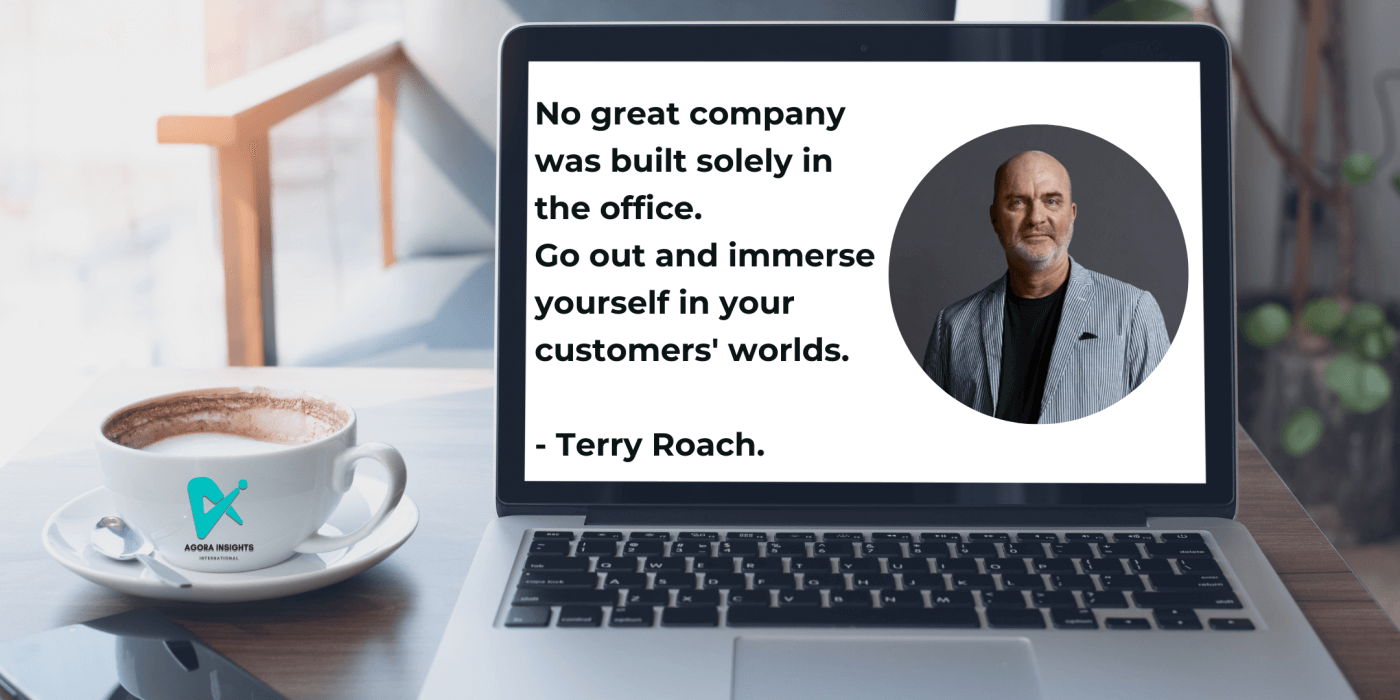It's been a privilege meeting Terry Roach, a visionary in the field of enterprise architecture and business architecture. Terry's insights into the evolution of business models, the importance of ontology in architecture, and the potential of AI to shape our future were not only thought-provoking but also a reflection of his extensive experience and innovative thinking. Reflecting on my conversation with Terry, I'm reminded of the importance of adaptability and innovation in our evolving professional landscape. Terry's insights, based on his extensive experience in enterprise and business architecture, provide valuable lessons for those navigating the complexities of business environments.
Background
Terry is a seasoned professional with a rich history in IT and software. He has contributed significantly to the field of enterprise architecture. His journey from working with global software vendors to pursuing a PhD in enterprise modeling illustrates a deep commitment to understanding and improving how businesses function. His work led to the founding of Capsifi, a company that initially resisted being categorized as an enterprise architecture tool, aiming instead to model business operations. Terry's shift from CEO to focusing on product vision underscores the dynamic nature of leadership and the importance of aligning roles with personal strengths and interests.
Capsifi was recently acknowledged as a Leader in the 2024 Enterprise Architecture Data Quadrant Report. This recognition reflects Capsifi's ongoing commitment to innovation, client satisfaction, and forward-thinking strategic vision.

Three Key Topics Discussed:
1. The Evolution of Business Architecture:
Business architecture is a discipline that brings a structured, disciplined approach to understanding an organization. It's about knowledge management, using frameworks like capability maps and value stream canvases to create a shared understanding of how a business operates. Terry emphasized that architecture is not just about mapping technology but understanding the essence of an organization and how it functions.
Terry's experience highlights the often-overlooked aspect of business operations within large organizations. His realization that businesses lacked a clear model to describe their functions led to the development of an enterprise ontology, which serves as a comprehensive template for understanding all business components.
2. The Role of Ontology in Business Architecture:
Ontology, the philosophical study of what exists, is crucial in creating a model of a business. Terry's academic work in this field has practical applications in business architecture, providing a structured approach to understanding the interconnectivity of various business elements.
Terry also discussed the challenge of making architecture more accessible and universally accepted across businesses. He stressed the need for tools and techniques that can be easily adopted by non-architects to facilitate collaboration and drive transformation.
3. The Future of Architecture and AI
Terry envisions a future where AI plays a significant role in business architecture. However, he emphasizes the importance of quality knowledge and creative content as the foundation for AI applications. The ability to ask meaningful questions of business models and receive insightful answers will be a key differentiator in the effectiveness of AI in architecture.
10 Learning Points:
- Adaptability is essential in a world where professional roles and industries are constantly changing.
- A strong foundation in business architecture can significantly improve the clarity and efficiency of business operations.
- Ontologies provide a truthful framework for understanding the complex structures within an organization.
- AI has the potential to revolutionize the business architecture, but it requires high-quality, context-rich knowledge to be effective.
- The value stream canvas is an invaluable tool for aligning business activities with customer value.
- Cross-functional collaboration and diverse perspectives are critical for successful problem-solving in modern business environments.
- Technical debt and shadow systems are significant challenges that can be mitigated through proper architectural planning.
- Transparency and truth in business processes foster confidence and enable continuous improvement.
- The ability to communicate and share architectural models across an organization liberates the process and enhances collective understanding.
- Engaging the broader business community in architectural practices can lead to more effective transformations.

Conclusion
My conversation with Terry was fun and enlightening, emphasizing the importance of staying adaptable and open to new opportunities. As Terry aptly put it,
"We should focus on being the best we can in the present moment, as the future is always in flux."
I am grateful to Terry for sharing his entrepreneurial wisdom, global experience, and valuable insights. There’s a depth of learning for each of us in our interesting and diverse career paths.
For those interested in further discussion or connecting with Terry, he is available on Linkedin and through his company, Capsifi.
I trust that you too have enjoyed the conversation. Let me know in the comments anything that resonated with you and any questions you have in mind.
Feel free to share what resonated in our Blueprints for Success Podcast or comment with any questions!
Learn more about Terry
“The CAPSICUM Framework – A semantic meta-model for strategically aligned business architecture.”
Originally a Ph.D. thesis, CAPSICUM is now a methodology, software platform & modelling repository (Jalapeno); a semantic application built on a new breed of W3C standards for semantic technologies and RDF-based ontologies.
It works, it's proven and it's saving our customers money.” - Terry Roach, Capsifi
For those interested in learning more about CAPSICUM visit Capsifi